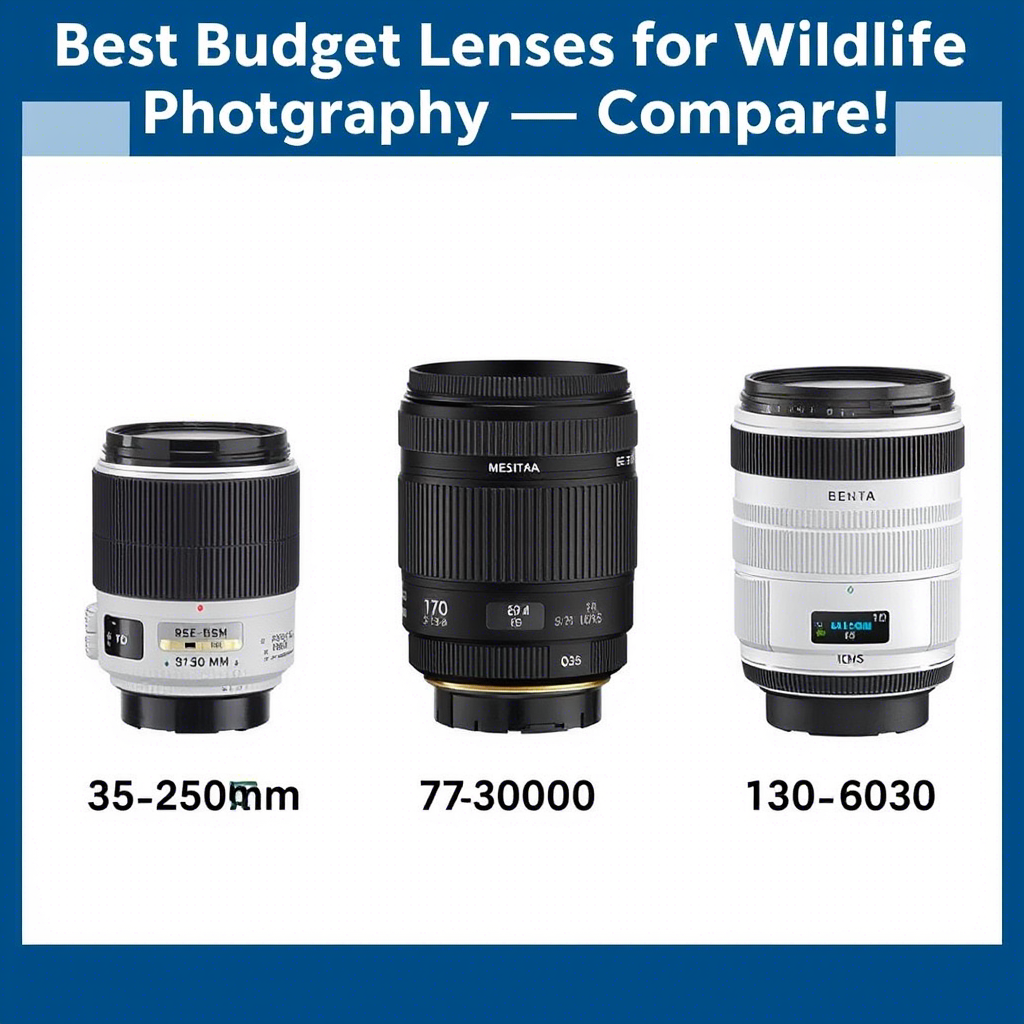You don’t need a $2000 lens to capture stunning wildlife shots. In fact, with the right budget lens, you can photograph birds, deer, and even safari animals with sharpness, detail, and depth, without breaking the bank.
This 2025 guide is made for photographers (especially beginners and hobbyists) who want affordable but powerful telephoto lenses for wildlife photography.
If you’re looking for the Best lens for wildlife photography on a budget, you’re in the right place. This guide will help you find the perfect lens that suits your needs without straining your finances. With options available that cater specifically to those seeking the best lens for wildlife photography on a budget, you can capture stunning images without overspending.
🧐 What Makes a Good Wildlife Lens (Even on a Budget)?
When you’re photographing animals in the wild, you can’t walk up to them and say “cheese.”
You need a lens that lets you zoom in from a distance, keeps the image sharp, and tracks movement, sometimes in tricky lighting.
Here’s what to look for:
- Focal Length: At least 200mm — ideally 300mm+ for birds or distant animals
- Image Stabilisation (IS/VR/OSS): Helps reduce blur when shooting handheld
- Fast Autofocus: Crucial for capturing moving animals
- Lightweight Build: You’ll carry it in forests, fields, or even on safari
Aperture: Wider apertures (like f/4 or f/5.6) help in low light but can be expensive; f/6.3 is okay for beginners
🏆 Top 7 Budget Lenses for Wildlife Photography in 2025
Here’s a hand-picked list of the best lenses that combine performance + affordability for wildlife photographers across Canon, Nikon, Sony, and third-party systems.
🔹 1. Nikon AF-S 70–300mm f/4.5–5.6G IF-ED VR
- ✅ Great for: Nikon DSLR users (DX & FX)
- ✅ Why it’s great: Superb sharpness and stabilisation under $500
- ✅ Wildlife score: ⭐⭐⭐⭐☆
Tip: This lens is perfect for handheld deer and bird shots in natural light.
🔹 2. Canon EF-S 55–250mm f/4–5.6 IS STM
- ✅ Great for: Canon DSLR (APS-C) beginners
- ✅ Silent STM autofocus, great for video + stills
- ✅ Price: Around $250
This is one of the most popular budget lenses ever made by Canon.
🔹 3. Sigma 100–400mm f/5–6.3 DG OS HSM Contemporary
- ✅ For Canon & Nikon full-frame and APS-C
- ✅ Exceptional reach (400mm) at under $700
- ✅ Built-in image stabilisation
Pro Tip: On a crop-sensor body, you’re effectively shooting at 150–600mm — ideal for birding.
🔹 4. Tamron 100–400mm f/4.5–6.3 Di VC USD
- ✅ Competitive with Sigma 100-400
- ✅ Vibration Compensation (VC), moisture-resistant
- ✅ Best for wildlife in unpredictable weather
Bonus: Lighter than most superzooms, so ideal for long hikes.
🔹 5. Canon RF 100–400mm f/5.6–8 IS USM
- ✅ For Canon EOS R series mirrorless
- ✅ Compact, sharp, and stabilised
- ✅ One of the few budget RF-mount wildlife lenses
If you’re using Canon’s R50, R10, or R7, this lens is a must-have for telephoto reach on a budget.
🔹 6. Nikon Z DX 50–250mm f/4.5–6.3 VR
- ✅ Designed for Nikon Z50, Z30, Zfc
- ✅ Surprisingly sharp with great stabilisation
- ✅ Lightweight for travel photographers
Good for: Beginner wildlife shooters transitioning from phone to mirrorless.
🔹 7. Sony 55–210mm f/4.5–6.3 OSS (E-mount APS-C)
- ✅ Pairs with A6000–A6700 series
- ✅ Built-in OSS, small form factor
- ✅ Around $250–300
Perfect for casual wildlife photographers looking for reach on a tight budget.
💡 Bonus: Buying Used Wildlife Lenses
Buying second-hand lenses is a great way to save even more. Always check for:
✅ Clean glass
✅ Smooth zoom/focus ring
✅ No fungus or internal dust
✅ Accurate autofocus
📸 Wildlife Photography Tips (with Budget Gear)
Even if you’re not using a $3000 prime lens, you can still take stunning shots. Here’s how:
- Use a monopod for added stability with long lenses
- Shoot early morning or late evening (better light = better images)
- Use back-button focus to track moving animals
- Get low to the ground for dramatic compositions
- Be patient — animals don’t always show up when you want
✅ Final Thoughts
You don’t need to go broke to start wildlife photography.
With lenses like the Sigma 100–400mm or the Canon 55–250mm, you can start capturing birds, foxes, and wild deer with amazing clarity, even as a beginner.
